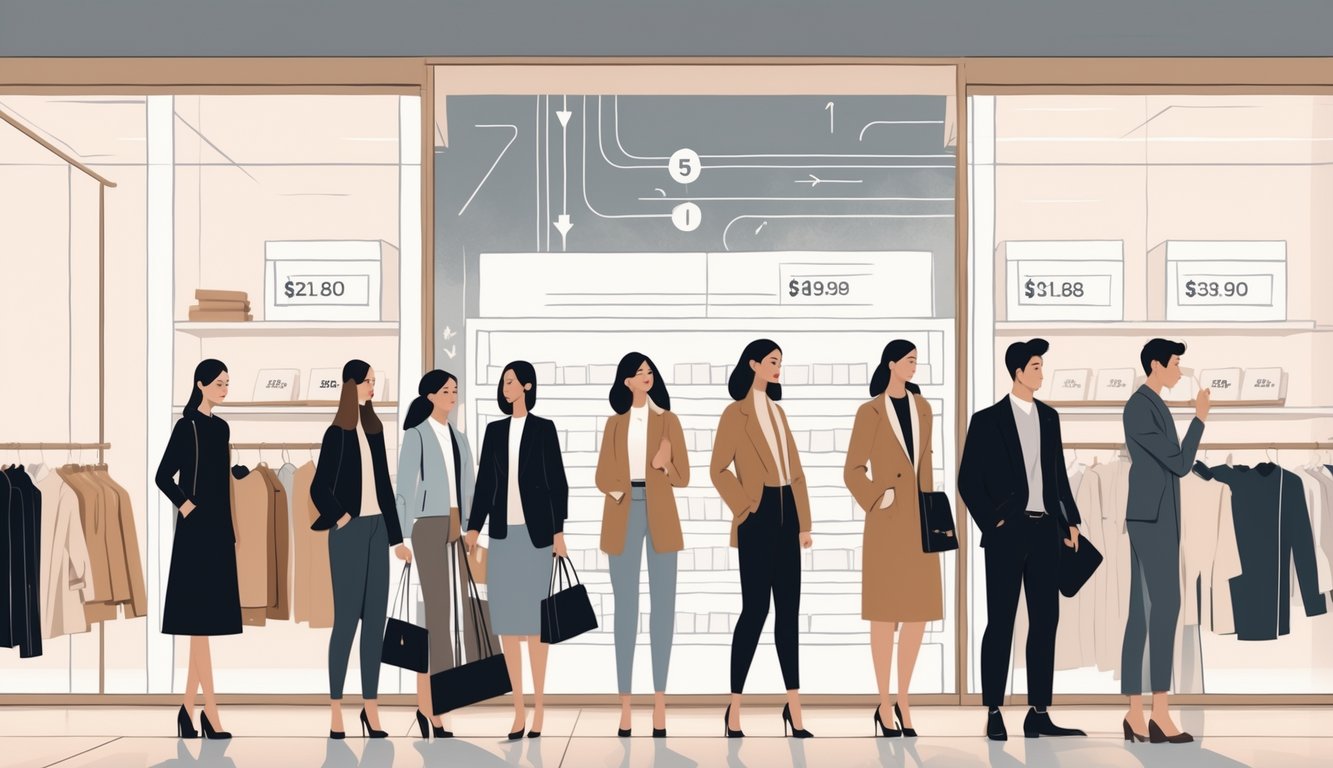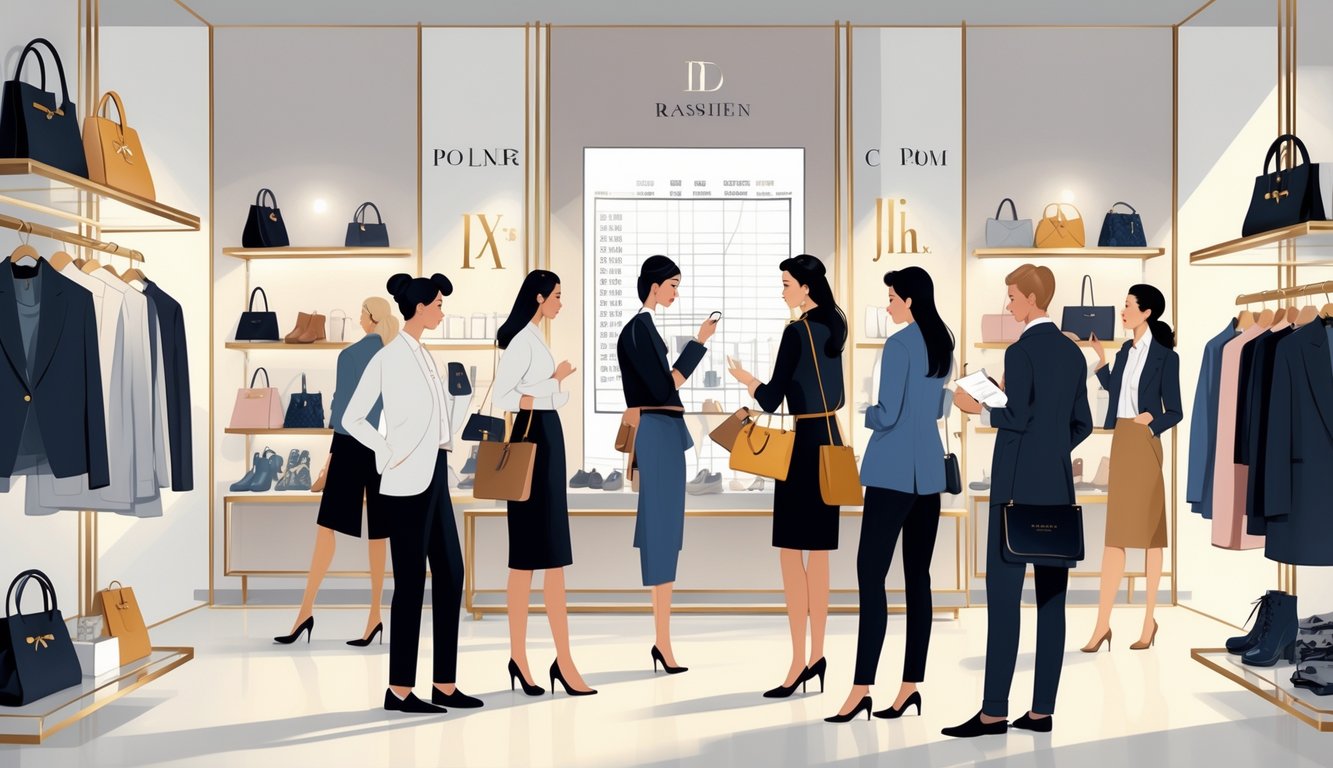
Impacts of a Presidential Election Year
It’s a weird feeling, walking past Fifth Ave windows and realizing Vuitton’s new price probably came from some analyst panicking over U.S. election news, not fabric costs. Every election year, luxury execs freeze. McKinsey’s always talking about this—tax reform, trade deal drama, tariffs, whatever, it all makes brands hypersensitive. U.S. shoppers feel it, too; I’ve gotten emails from boutique stylists warning me about “upcoming adjustments.” Statistically, retail volatility jumps like 7-10% in election years. Brands just hit pause, yank promo codes, and hope for the best. Inventory managers? They’re constantly bouncing between optimism and full-blown paranoia, bracing for whatever the next administration throws at them.
Socioeconomic Factors and Economic Pressure
Some days, none of it adds up. You sit down at Dior, see another €450 price jump, and remember eurozone inflation’s at 3.2%—like anyone’s wardrobe budget keeps up with that. Incomes don’t scale up with new Fendi collections, so people (collectors too) just run to resale. Data backs it up—secondary platforms say transactions are up 17% year over year. Luxury brands try “exclusive” payment plans or installment apps, but anyone saying demand is recession-proof is kidding themselves. Friends in Shanghai, San Francisco, wherever—they’re all talking about skipping big purchases, blaming rent, loans, or just “economic uncertainty” dragging down luxury sales. And yet, influencers keep showing off new stuff. No pattern, no logic, just chaos. Ask an economist and they’ll blame it on macro indicators I don’t even pretend to understand.
Luxury Brands Rethinking Supply Chains
It’s hilarious—brands kept insisting their supply chains were perfect, but now they’re scrambling to fix everything. Suddenly it’s all about “authentic supply chains” and bragging about local sourcing. Apparently, trust needs a rebrand if people are bailing over sky-high prices. Who knew?
Transparency and Ethical Sourcing
Transparency used to be a buzzword. Now it’s a last-ditch attempt to win back trust. Brands are waving around supply chain audits, digital ledgers, QR codes (which never scan right for me), and they’re obsessed with traceable materials.
Every Chanel drop now mentions “sustainably farmed cashmere” like it’s a secret ingredient. Bain’s latest says brands with diluted identity or copycat looks are losing ground to “authentic” competitors. But, really, is a scarf more ethical just because the tag tells its story? Still, people expect proof now, at least in Europe. I’m curious if Asian and U.S. shoppers buy it or just roll their eyes—I’ve heard both. Those supply chain dashboards? Not all artisans love them, for what it’s worth.
Strategies for Localized Production
Reshoring is suddenly “innovative,” but old Italian ateliers have done it forever. Now LVMH and the rest are buying up supply networks—Italy’s been busy. It’s not nostalgia, it’s survival. The “made in Italy” label has to sound even more exclusive now (as if Paris brands haven’t stitched in Florence for decades).
Localized production actually cuts shipping headaches and wild cost swings—I watched a client save 18% just by moving logistics to Milan, though her fabric guy disappeared for weeks anyway. Sometimes those workshops feel staged. Try explaining “luxury” as just-in-time inventory and ERP systems—shoppers just want the bag, not a lecture. But this scramble for “homegrown” production isn’t going away. What happens when they run out of skilled hands? Someone’s getting bumped to the waitlist.
Spotlight on Iconic Fashion Houses

Here’s what’s driving me nuts: blink, and flagship classics cost more than my car insurance (which, oops, I still haven’t renewed). Did anyone warn us that math like this was coming? Every time LVMH or Kering does an investor call, there’s some wild price move, dressed up as “brand elevation.” Sure.
chanel and hermès: A Study in Contrasts
Chanel jacked the Classic Flap to over €10,000. Did any sales associate mention it in the boutique? Nope. Hermès, meanwhile, just keeps playing their quota games with the Birkin and Kelly—the hikes sneak up, and you only notice when your credit card starts sweating.
Bain & Co. says Hermès demand barely blinked this year (probably because supply’s always limited), but Chanel’s massive hikes shoved “aspirational” buyers right out. A resale expert told me after the last Chanel hike, Flap bags flooded the secondhand market, prices dipped, then steadied as people adjusted. Wild stuff.
What kills me? “Exclusivity” is just a price trick sometimes. There’s a total disconnect between what shoppers want and what houses like Hermès or Chanel call “brand equity.” My wallet’s not doing €10,800 for calfskin, but hey, someone else will.
gucci, valentino, and moschino’s Recent Moves
Gucci spent the year shuffling its design team—Sabato De Sarno’s in charge now, and critics claim it’s a return to quiet luxury, but Bain says sales are flat. Valentino quietly shifted gears after Pierpaolo Piccioli left—heard they’re restyling the Garavani line, plus rumors about “wardrobing essentials” for Gen Z.
Moschino swapped designers again—maybe the new T-shirts won’t cost more than my electric bill. Prices jumped earlier this year (clowncore isn’t cheap?), but analysts warned buyers already felt left out. Last Moschino show I watched, half the crowd looked stunned by the new tags, or maybe that was just me.
Oh, and a consignment shop owner in Milan told me she’s getting more Gucci Marmont bags post-price hike. Even diehards have limits—except for that one guy at the café who still brags about his monogram belt like it’s a retirement fund.



